4 June
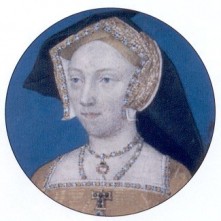
Jane Seymour
1534 – Death of Sir Edward Guildford at Leeds Castle. Guildford acted as guardian to John Dudley (future Duke of Northumberland) and held the posts of Marshal of Calais, Constable of Dover Castle and Lord Warden of the Cinque Ports.
1536 – Jane Seymour was proclaimed Queen at Greenwich Palace. Charles Wriothesley, the Tudor chronicler, recorded: “Also the 4th daie of June, being Whitsoundaie, the said Jane Seymor was proclaymed Queene at Greenewych, and went in procession, after the King, with a great traine of ladies followinge after her, and also ofred at masse as Queen, and began her howsehold that daie, dyning in her chamber of presence under the cloath of estate.”
1550 (some sources say 5th June) - Robert Dudley married Amy Robsart at the royal palace of Sheen at Richmond, near London. The marriage was attended by the then king, Edward VI.
1561 – The spire of St Paul's Cathedral caught fire after being struck by lightning. The fire melted the Cathedral's bells and lead from the spire "poured down like lava upon the roof".
1573 – Death of Sir Francis Jobson, administrator, at Monkwick, near Colchester. He was buried in St Giles, Colchester. Jobson was a member of Henry VIII's household, was Master of the Jewel House in 1553, escaped trial for supporting John Dudley in July 1553 and was pardoned by Mary I, and served Elizabeth I as Lieutenant of the Tower of London.
1590 – Baptism of William Cecil, 16th Baron Ros, courtier, ambassador. He was baptised at Newark Castle and was the son of the eldest son of William Cecil, 2nd Earl of Exeter, and Lady Elizabeth Manners.
1597 – Death of Sir Thomas Baskerville, soldier, at Picquency, in Picardy. He had served in the Netherlands under Robert Dudley, Earl of Leicester, and Peregrine Bertie, Baron Willoughby de Eresby, and was knighted in 1588 after the capture of Bergen op Zoom. He was buried in St Paul's Cathedral.
1603 – Death of Christopher Goodman, Church of England clergyman and radical Protestant, at Chester.
1626 – Burial of Thomas Howard, 1st Earl of Suffolk, naval officer and administrator, at Charing Cross, London. He was buried in the Howard vault of Saffron Walden church. He captained the Golden Lion in the struggle against the Spanish Armada in 1588.
5 June
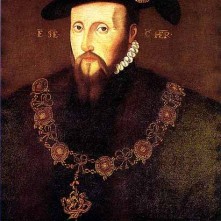
Edward Seymour
1516 – Maria de Salinas married William, 10th Lord Willoughby of Eresby. Maria was a good friend of Catherine of Aragon, and she and William were the parents of Katherine Willoughby, who went on to marry Charles Brandon, Duke of Suffolk.
1536 – Edward Seymour was created Viscount Beauchamp of Hache, Somerset, following the wedding of his sister, Jane Seymour, and Henry VIII.
1539 – Death of Brian Hygdon, Dean of York. Hygdon was close to Wolsey and Cromwell, and served on the King's Council in the North. He was buried in York Minster.
1577 – Death of John Rastell, author, Jesuit and Vice-Rector at Ingolstadt. He died in Ingolstadt.
1588 – Death of Anne de Vere (née Cecil), Countess of Oxford, at Greenwich. She was buried at Westminster Abbey. Anne was the daughter of William Cecil, 1st Baron Burghley, and his second wife, Mildred. She had been contracted to marry Philip Sidney, but married Edward de Vere, 17th Earl of Oxford in 1571. It was not a successful marriage, and the couple separated after Oxford refused to recognise their daughter, Elizabeth, as his.
1597 – Death of Sir John North, soldier, member of Parliament, Justice of the Peace and traveller. He died in the Low Countries.
1600 – Robert Devereux, 2nd Earl of Essex, was charged with insubordination during his time in Ireland at a special hearing at York House. He was ordered to remain under house arrest.
1604 – Death of Thomas Moffet, physician and naturalist, at Wilton, Wiltshire. He is known for his poem, "The Silkewormes and their Flies", which was "the first Virgilian georgic poem in English", and his work on insects, diet and eating habits.
6 June
1522 – Grand entry of Charles V, Holy Roman Emperor, into London, accompanied by King Henry VIII. Click here to read more.
1527 – Probable date for burial of Henry Algernon Percy, 5th Earl of Northumberland, in Beverly Minster.
1549 – An army of rebels assembled at Bodmin, Cornwall, and Mayor Bray convened a town meeting where resolutions were put containing the demands of the rebels who were against the introduction of the new “Book of Common Prayer”. This led to the Prayer Book Rebellion.
1556 – Birth of Edward la Zouche, 11th Baron Zouche, at Harringworth, Northamptonshire. He was the only son of George la Zouche, 10th Baron Zouche of Harringworth, and his wife, Margaret. Zouche was a landowner, diplomat and member of James I's Privy Council.
1563 – Baptism of Robert Cecil, only son of William Cecil, 1st Baron Burghley, and his wife, Mildred, at St Clement Danes, Strand.
1597 – Death of William Hunnis, musician and conspirator. He was Master of the Children of the Chapel (royal) in Elizabeth I's reign. He was imprisoned in 1556 in the Tower of London after being involved in a plot to rob the treasury, and was released when Elizabeth I became Queen.
1605 – Playwright William Haughton made his will and died in the next couple of days. His plays included "Englishmen for my Money, or, A Woman will Have her Will", "Patient Grissil" and "Grim the Collier of Croydon, or, The Devil and his Dame", and he wrote or co-wrote many more.
1618 – Death of Sir James Lancaster, merchant and Director of the East India Company, in London. He was buried in All Hallows, London Wall.
7 June
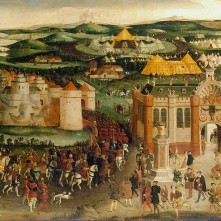
Field of Cloth of Gold
1520 - The first day of the historic meeting between Henry VIII and Francis I of France between the English stronghold of Guînes and the French town of Ardres, on a piece of land referred to as the Field of Cloth of Gold. Click here to read more.
1532 – Birth of Amy Robsart (later Lady Dudley) probably at Stanfield Hall, Norfolk. Amy was the daughter of Sir John Robsart of Syderstone, Norfolk, and his wife, Elizabeth. Amy married Robert Dudley, Elizabeth I's favourite, in 1550.
1536 – A water pageant was held in honour of Jane Seymour, the new queen, on the Thames.
1546 – Henry VIII and Francis I signed the Treaty of Ardres (also known as the Treaty of Camp).
1592 – Death of Peter Osborne, administrator. He was buried at St Faith's under St Paul's. He held offices in the Exchequer during Edward VI's reign and is thought to have supported Lady Jane Grey. Osborne served Elizabeth I as an ecclesiastical commissioner and various other posts.
1594 – Roderigo Lopez, Elizabeth I's physician, was hanged, drawn and quartered at Tyburn after being accused by Robert Devereux, Earl of Essex, of conspiring with Spanish emissaries to poison the Queen. Lopez maintained his innocence, and the Queen seemed unsure of his guilt. It is thought that the charges were trumped up. Trivia: Lopez may have been the inspiration for Shakespeare's character, Shylock, in “The Merchant of Venice”.
1599 – Death of Henry Porter, playwright, after being mortally wounded in his left breast by a rapier in an assault carried out by John Day, a fellow writer.
1604 – Death of John Ley, explorer, in London. He was buried in the chancel of St Andrew by the Wardrobe. Ley was the first Englishman to enter the Amazon and one of the first to explore the coast of Guiana.
1618 – Death of Thomas West, 3rd Baron De La Warr, colonial governor (of Virginia), at sea, on his way to Virginia.
8 June
1476 – Death of George Neville, administrator and Archbishop of York, at Blyth in Nottinghamshire. He was buried in York Minster.
1492 – Death of Elizabeth Woodville at Bermondsey Abbey. Elizabeth was the consort of Edward IV and mother of the Princes in the Tower. She was buried beside her husband in St George's Chapel, Windsor Castle. You can read more about Elizabeth Woodville in June 2015's Tudor Life magazine - click here.
1533 – Papal authority in England was denied by Parliament.
1536 – Parliament passed the second “Act of Succession” removing Henry VIII's daughters, Mary and Elizabeth, from the line of succession.
1536 – Henry Fitzroy, Duke of Richmond, made his last public appearance (at Parliament) before his death.
1590 – Death of Thomas Randolph, Elizabethan diplomat, at his home in St Peter's Hill, London. He was buried at St Peter Paul's Wharf. Randolph acted as a go-between for Elizabeth I and Mary, Queen of Scots, and also served his Queen in Russia and France. He has been described as the first English "career diplomat".
9 June
1511 – Death of William Courtenay, 1st Earl of Devon, at Greenwich. He died of pleurisy and was buried at Blackfriars, London, with the honours due an earl, even though he hadn't been officially invested yet. Courtenay was Henry VIII's uncle, having married Katherine, daughter of Edward IV and Elizabeth Woodville.
1549 - The first use of the Book of Common Prayer. Click here to read more.
1563 – (or 10th June) Death of William Paget, 1st Baron Paget, diplomat and administrator, probably at his estate of West Drayton in Middlesex. Paget's career included serving as an ambassador to the French court, being a member of Henry VIII's Privy Council, sitting on the commission which tried the Earl of Surrey and serving on Mary I's Privy Council.
1573 – Death of William Maitland of Lethington, Scottish courtier, politician, reformer and diplomat. He died in prison in Leith, in suspicious circumstances, though it was said to be suicide. Maitland supported the restoration of Mary, Queen of Scots, and was imprisoned as a result.
1583 – Death of Thomas Radcliffe, 3rd Earl of Sussex, Lord Lieutenant of Ireland and President of the Council of the North, at Bermondsey. His body was buried at Boreham in Essex, but his innards were buried at the church in Bermondsey.
10 June
1464 – Birth of John Islip, Abbot of Westminster, probably at Islip, Oxfordshire. Islip became Abbot of Westminster in 1500, and was the last to hold this office by free choice of the community.
1528 – Birth of Thomas Percy, 7th Earl of Northumberland. Percy was a staunch Catholic, and was involved in the failed Rising of the North in Elizabeth I's reign. He fled to Scotland, but was captured and taken to York on 22nd August 1572, where he was beheaded in the Pavement, and his head put on display on Micklegate Bar. His body was buried in St Crux Church.
1537 – Deaths of Blessed Thomas Green and Blessed Walter Pierson, Carthusian monks from London Charterhouse, in Newgate Prison, from starvation. They were two out of nine monks who were purposely starved to death for refusing to accept the royal supremacy. Others were hanged, drawn and quartered.
1540 - Arrest of Thomas Cromwell, 1st Earl of Essex, in the council chamber at Westminster. Click here to read more about it.
1584 – Death of Francis, Duke of Anjou and Alençon, a suitor whom Elizabeth I dubbed "Frog", in Paris. It is thought that he died of malaria.
1607 – Death of Sir John Popham, lawyer, Judge and Speaker of the House of Commons. He was buried in Wellington, Somerset.
1612 – Funeral of Robert Cecil, 1st Earl of Salisbury, at Hatfield.


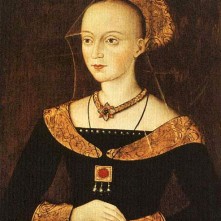


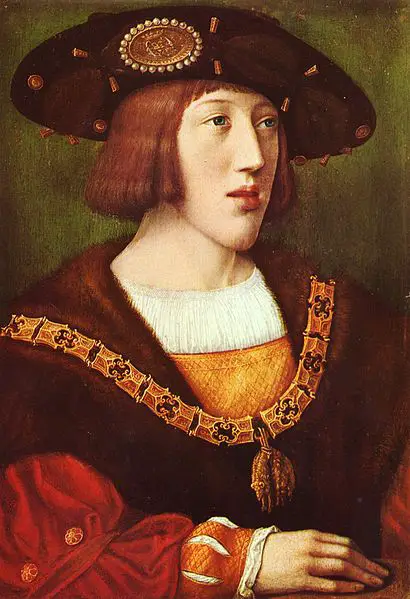
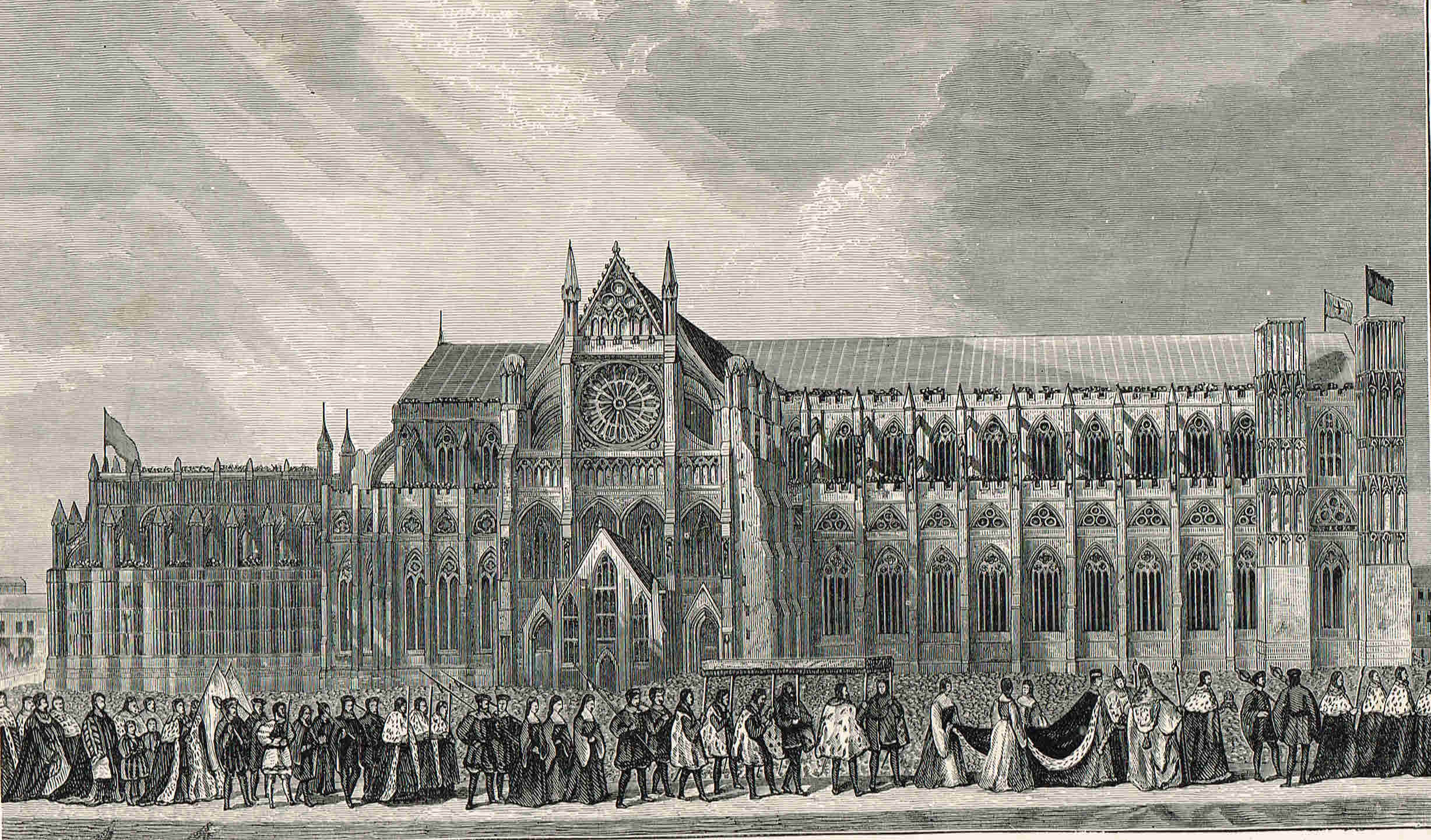
Leave a Reply